应用领域
Aluminum Forging Process
Forging aluminum requires manipulating aluminum alloys between high temperatures and pressure, creating an environment of transformation in which confusion leads to clarity. However, it is not just a process but a transformative procedure that creates high-strength components necessary across such industries as aerospace, automotive, and defense.
The forging process for aluminum products involves several key steps:
Material Selection: Choose the appropriate aluminum alloy based on the desired mechanical properties, corrosion resistance, and application requirements.
Heating: Aluminum is typically heated to a temperature between 350°C to 500°C (662°F to 932°F) to enhance its malleability and reduce the risk of cracking during deformation.
The exact temperature depends on the specific alloy being forged.
Forging Techniques: Common techniques include:
Open-die forging: The aluminum is shaped using flat dies, allowing for significant deformation.
Closed-die forging: Also known as impression-die forging, this method involves using pre-shaped dies to create more complex geometries.
Ring rolling: Used for creating round shapes, this technique involves rolling a heated aluminum ring between two rotating rolls.
Deformation: The heated aluminum is subjected to mechanical forces, shaping it into the desired form. This step may involve multiple passes to achieve the final geometry.
Cooling: After forging, the aluminum part is allowed to air cool or may undergo controlled cooling to relieve residual stresses.
Heat Treatment (optional): Depending on the alloy and desired properties, heat treatment processes such as solution heat treatment and aging may be applied to enhance mechanical characteristics.
Finishing Operations: Final machining, surface treatment, or other finishing processes may be performed to achieve the required dimensions and surface quality.
Quality Control: Inspect the forged products for dimensional accuracy, surface defects, and other quality parameters.
This process results in high-strength aluminum components that are used in various industries, including aerospace, automotive, and construction.
Advantages of Aluminum Forging
In the manufacturing horizon, aluminum forging represents a progress of innovation. The benefits it has on offer are well-reaching across industries.
Be it the aerospace or automotive sectors, among others, such benefits create a tale of distinction, placing aluminum forging in a course of immense popularity and use. Such benefits include:
Improved mechanical properties – strength, toughness, and fatigue resistance.
Better dimensional intricacy and surface finishing comparisons to other techniques.
Less material wastage due to an accurate shape process.
Economics in mass manufacturing.
A strong and light power ratio seaborn material for light goods
Applications of Aluminum Forging
Since the special properties of forged components, namely, high strength, ease of manufacture, and corrosion resistance, are very important when reliability,
performance, and durability are critical, the main places are:
Aerospace — aircraft structural elements , parts of the landing gear, leading systems
Automotive — suspension parts, steering knuckles, pg009 parts of the transmission
Defense industry — missile parts, armored vehicles, and weapon systems
Consumer goods, sports equipment, frame components bikes, and high-quality pans
Customized Forged Aluminium Parts

